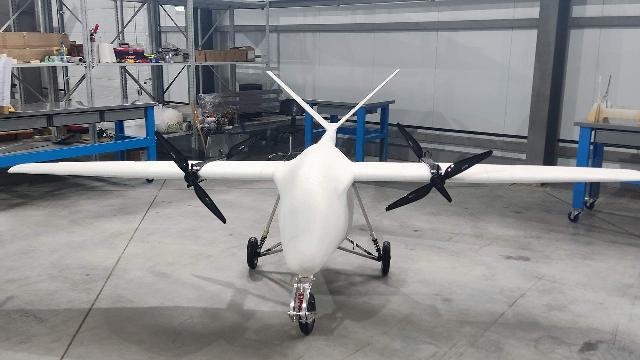The drone will be in demand as a bomber or a transport UAV.
A prototype of a large unmanned aircraft has been created in Siberia. The range of the new drone is one thousand kilometers. At this distance, it can deliver at least 200 kg of payload. It will also be in demand as a military transport or drone bomber. Initially, it was created as a transport UAV for the eastern regions of the country, where the distance between settlements is often measured in hundreds of kilometers. Moreover, he does not need a runway, he can "unload" by parachute.
Big plans
A prototype of the future large transport unmanned aircraft has been developed by the scientific and production center "Unmanned Aircraft Systems" (NPC BAS), which recently opened in Tomsk. The developers plan to take a large drone into the air in August-September 2025 and begin a program of flight tests, followed by joint tests of UAS in performing applied tasks over the Siberian taiga, the NPC BAS told Izvestia.
The dimensions of the drone are impressive: the fuselage length is about 6 m, and the wingspan is about 10. The payload capacity of the device is more than 200 kg. The unmanned aircraft is equipped with a piston engine with a capacity of 100 hp and will be able to fly at a range of up to 1000 km at a speed of 150-180 km/h.
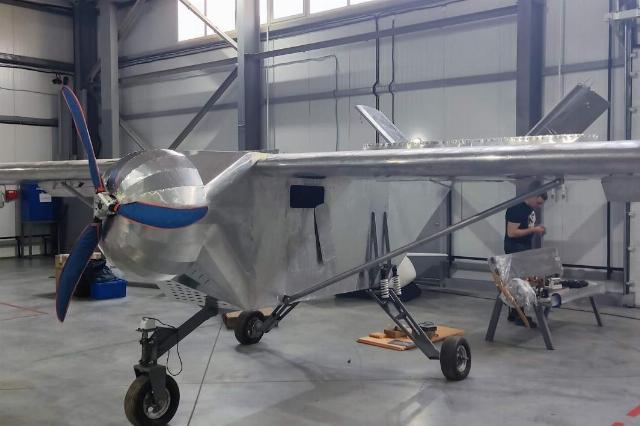
Photo: IZVESTIA/Dmitry Kornev
Image source: iz.ru
The main purpose of the device is cargo transportation. The dimensions of the fuselage with a cross-section of about one meter per meter are designed to accommodate a sufficiently voluminous payload.
A non—stop cargo delivery system will also be developed for the drone by parachuting the container. This will make it possible to arrange delivery to points that do not have their own runway.
Of course, the device has all the capabilities of modern drones: surveillance and monitoring, transmission of information in real time to the operator, automatic take-off and landing and following the route.
Over long Siberian distances, it is necessary to resolve the issue of communication with the device in the absence of cellular networks — this will be done using satellite communications.
The possible military use of such a device is seen primarily in its main function — as a military transport vehicle. It is for the delivery and landing of cargo that the UAV is most suitable and does not require serious modifications.
Virtually any UAV is a dual—use vehicle, military expert Vasily Dandykin told Izvestia.
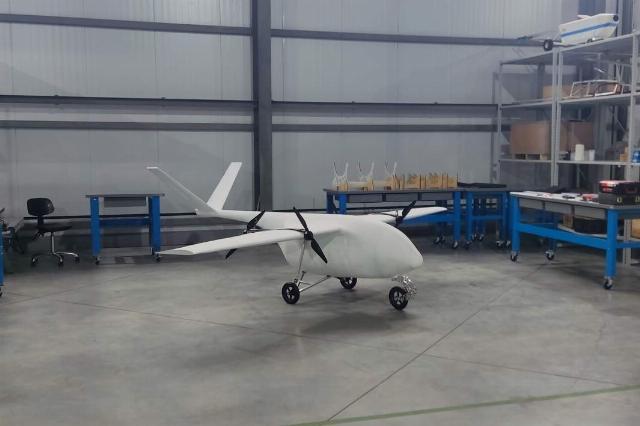
Photo: IZVESTIA/Dmitry Kornev
Image source: iz.ru
"Baba Yaga, which is now well—known to everyone, was originally an agricultural company that watered fields with chemicals," he recalled. — It was quickly adapted, and it turned out to be a very unpleasant device, engaged not only in supply, but also used on the front line as a bomber capable of carrying serious ammunition. The new drone from Siberia has better characteristics than the APU vehicles. The drones, recently shot down in the Moscow region, each carried 60 kg of explosives. Our machine can lift 200 kg — it is many times more powerful. It is also important that our car is not a one-time kamikaze. It can fly to the target, drop the payload and return back — it should be cheaper than sending cars one way. It will be possible to form squadrons from such vehicles and increase their firepower when working in certain areas.
Of course, they will also be in demand in the national economy. There are many applications for such UAVs, especially in Siberian conditions: delivery of parcels and goods, spare parts for any equipment and the oil and gas industry, medicines and many other use cases.
The Tomsk project
NPC BAS was established as part of the national project for the development of unmanned aircraft systems (UAS) for the development and production of drones, training specialists in their operation, as well as the development and implementation of projects for their use in various fields of the economy.

Photo: IZVESTIA/Dmitry Kornev
Image source: iz.ru
The center has received a federal subsidy to equip several sites to create a full-fledged production of unmanned aerial vehicles.
Modern production equipment was purchased and installed, which allows the production of UAS of almost any caliber, from small devices weighing a couple of kilograms to large machines with a wingspan of several meters. NPC performs a full cycle of UAS development, production and application.
A flight test facility has been set up in the Parabelsky district of the Tomsk Region, where both the devices themselves and the methods of using UAS will be tested. It is planned to train specialists in the operation and maintenance of drones for the whole country.
"Polkan" over the taiga
The creation of new devices takes a long time, so now the NPC BAS has started using several ready-made aviation complexes in practical tasks. The most serious ready—made drone in the Tomichi flight fleet is the DIA-20 aircraft type aircraft manufactured by DIA-AERO. This bass with a mass of 30 kg can fly up to 1000 km. It is equipped with a piston engine and is made according to the aerodynamic scheme "duck" with a pusher screw. The flight duration is 10 hours. With a length of about 2 m, the wingspan of the device is 4 m. It is equipped with a video surveillance system and can take on board up to 6 kg of payload.
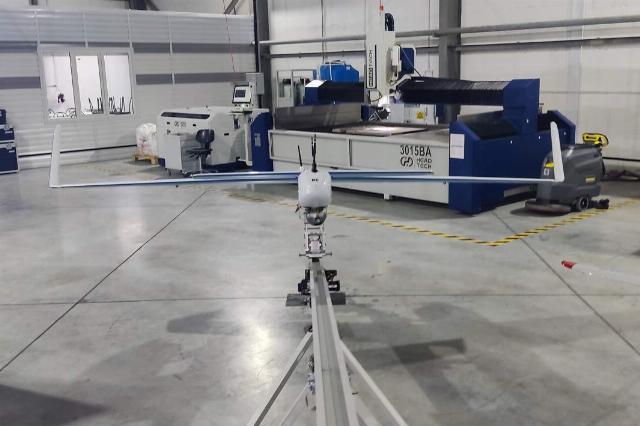
Photo: IZVESTIA/Dmitry Kornev
Image source: iz.ru
The main purpose of such a drone is to monitor the Earth's surface. The BASS launches from a catapult and lands on a parachute after completing a route assignment. The device is civilian and will be used in Siberia to control forest areas and monitor extensive infrastructure facilities such as oil pipelines and power transmission lines.
Monitoring equipment can be replaceable, from a conventional video surveillance system to high—resolution technology, multispectral cameras, thermal imagers, and special magnetometric equipment. In one flight, the DIA-20 can inspect up to 200 square kilometers of territory.
In the military sphere, the DIA-20 can be used for conducting visual reconnaissance, including in real time and at night.
The Tomsk UAS center is already working on the creation of devices of its own design. First of all, they are designed to solve transport problems — in the absence of roads in the vast Siberian taiga, the possibility of prompt cargo delivery is very relevant.
With a take-off weight of up to 100 kg, the Polkan M1 unmanned aerial vehicle can carry up to 40 kg of cargo and carry it up to 100 km at a maximum speed of up to 140 km/h. The flight duration is one hour. The Polkan is equipped with an electric propulsion system, and the first flight is scheduled for this summer. For its operation, a runway is already required - no more than 500 m of flat surface.
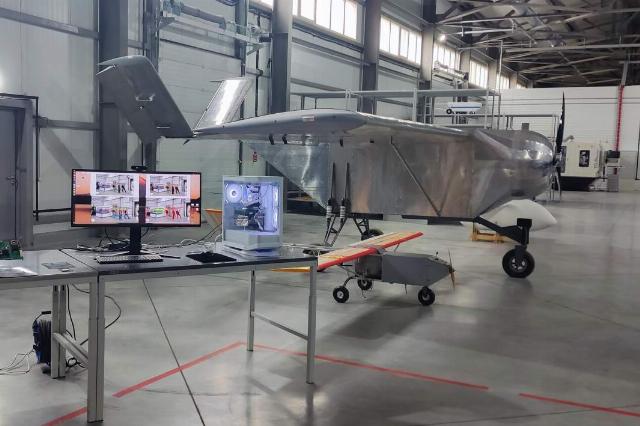
Photo: IZVESTIA/Dmitry Kornev
Image source: iz.ru
The special features of this type of spacecraft are proven algorithms for automatic takeoff and landing. And, of course, it is supposed to automatically follow the route laid out on the map at a given flight altitude. Modern navigation systems are tied to satellites and ensure the accuracy of determining coordinates with an error of a few meters.
Of course, Polkan can monitor and observe the terrain, but for it this is an auxiliary task. The main task is cargo delivery, and even the body of the aircraft has an appropriate configuration, resembling the fuselage of the An-14 Pchelka transport aircraft. The device will participate in several pilot cargo delivery projects in Siberia.
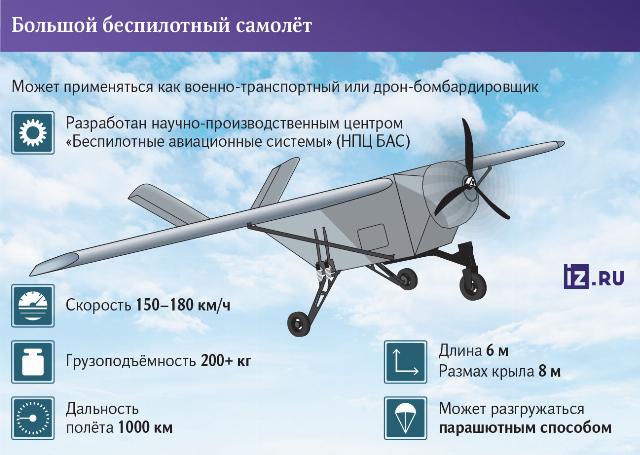
At the next stage of the project's development, work is planned to increase the duration and range of flight, as well as scale the size of the next-generation Polkans.
The likely military use here is completely similar to the civilian one — urgent cargo delivery. After improvements, if unloading is provided in a non-stop way, it can be used as a bomber, but still it is primarily a specialized transport vehicle.
Dmitry Kornev
Bogdan Stepovoy
